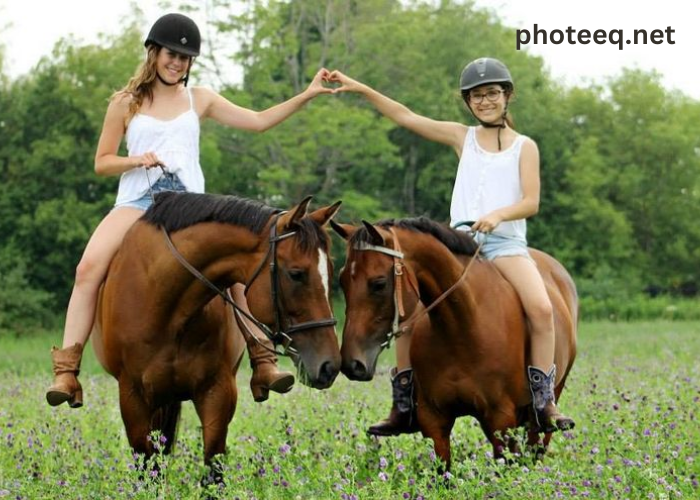A History of Partnership
The history of human-horse interaction dates back thousands of years. Initially domesticated around 4000 BC on the steppes of Central Asia, horses quickly became indispensable to human societies. From the chariots of ancient civilizations to the cavalry of medieval armies, horses provided mobility, strength, and speed, transforming warfare, trade, and exploration.
In more recent centuries, horses have transitioned from tools of labor to beloved companions and partners in leisure activities. Their roles expanded beyond practicality into realms of recreation, therapy, and sport, cementing their place not just in stables but in the hearts of people worldwide.
The Bond Beyond Words
What sets apart the bond between humans and horses is its depth and non-verbal nature. Communication between horse and rider often transcends words, relying on subtle cues, body language, and trust. This silent dialogue fosters a relationship built on mutual respect and understanding.
For equestrians, the connection with their horses goes beyond mere ownership or training—it’s a partnership grounded in empathy and emotional reciprocity. The rhythmic cadence of hooves, the responsive flick of an ear, and the gentle nuzzle speak volumes, forging bonds that withstand the test of time.
Therapeutic Partnerships
Beyond recreational riding, horses play a vital role in therapeutic settings. Equine-assisted therapy has gained recognition for its profound impact on individuals with physical, emotional, and cognitive challenges. The calming presence of horses and the tactile experience of grooming or riding can provide therapeutic benefits ranging from improved motor skills to enhanced emotional regulation and self-confidence.
In therapeutic riding programs, horses serve as willing partners in the healing journey, offering riders a sense of empowerment and accomplishment. The non-judgmental nature of horses allows individuals to build trust and develop social skills in a supportive environment, fostering emotional resilience and well-being.
Cultural Significance and Symbolism
Throughout history, horses have symbolized freedom, strength, and nobility across cultures. They feature prominently in folklore, mythology, and literature, often representing untamed spirit or transcendent beauty. From Pegasus in Greek mythology to the Mustangs of the American West, horses evoke a sense of wonder and admiration that transcends their physical form.
In art and literature, horses continue to inspire creativity and expression. Artists capture their grace in paintings and sculptures, while writers weave tales of adventure and courage around their equine protagonists. The enduring presence of horses in cultural narratives reflects their enduring influence on human imagination and identity.
Looking to the Future
As we navigate the complexities of the modern world, the bond between humans and horses remains a source of comfort and inspiration. From therapeutic interventions to competitive sports and recreational riding, horses continue to play diverse roles in human society.
Advancements in veterinary care, training techniques, and understanding of equine behavior ensure that the partnership between humans and horses evolves responsibly. With increased awareness of animal welfare and conservation efforts, the future holds promise for nurturing this ancient alliance while respecting the natural needs and behaviors of horses.
conclusion
In conclusion, the profound bond between humans and horses transcends utility, evolving into a partnership marked by mutual respect, understanding, and emotional connection. Whether in the arena, on the trail, or in therapeutic settings, horses enrich our lives in ways that defy simple explanation, reaffirming their status not just as companions but as cherished members of our shared journey.







